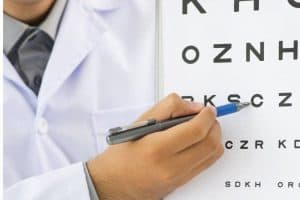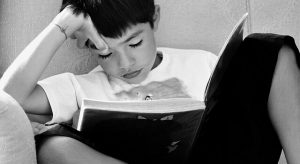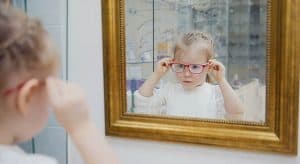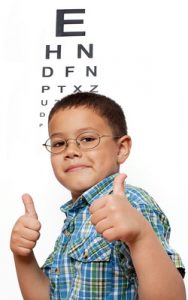More than 13% of all students have hyperopia, a vision problem that may be impacting their ability to learn.
What is hyperopia?
Hyperopia (farsightedness) occurs when light is focused behind the retina, instead of directly onto the retina, resulting in blurred near vision.
This can be caused by any of the following anatomical reasons: the eyeball is too short, the cornea is too flat, or the lens is too thin.
It is estimated that 1 in 7 children has hyperopia, though many cases often go undiagnosed— resulting in misdiagnosis of learning problems, ADHD and behavioral issues.
Often, in children under ten years old, the eye’s lens is able to compensate for blurred near vision by utilizing the focusing muscles to yield clearer vision.
However, this involves putting extra stress on the focusing muscles, often leading to eye strain and fatigue, and resulting in academic, attentional and behavioral problems in the classroom.
It is therefore essential to be aware of the signs of this vision condition, as it can save your child from years of academic stress.
Does hyperopia impact learning?
Yes.
The following signs may indicate your child has hyperopia:
- Reading, learning, or attentional difficulties
- Headaches or fatigue after prolonged near vision activities, such as reading, writing, or computer use
- Squinting or other accommodations to keep images and objects in focus
- Blurred near vision and clear distance vision
- Holding books, phone or tablet at arm’s length
- Inward eye turn when trying to focus
In mild cases of hyperopia, visual acuity may not be affected, though they may complain of headaches or fatigue when reading or using the computer.
If your child experiences any of these signs above, contact an eye doctor near you.
SEE RELATED: Healthy Eyes for Life: 10 Facts for School Children
How does hyperopia impact learning?
Hyperopia can make learning both difficult and stressful for a child—and may even lead to avoidance behaviors and outbursts of frustration, in addition to poor academic achievement.
The increased stress that is placed on the eyes can lead to many academic difficulties, especially when it comes to reading and writing.
Moreover, eye strain, fatigue and headaches can cause attentional and behavioral issues in the classroom, further increasing a child’s academic challenges.
The importance of regular eye exams
Most parents mistakenly believe school vision screenings can detect all vision problems, and therefore do not take their children for regular eye exams with an eye doctor.
However, vision screenings generally focus on vision clarity and may not detect hyperopia, making a trip to the eye doctor absolutely essential for detection of a near vision problem, along with any other vision problems.
During a comprehensive eye exam, your child’s eye and vision will be assessed to rule out or identify any type of vision problem.
With specialized tests and equipment, your child’s eye doctor will be able to provide an accurate optical prescription for glasses or contact lenses that can help your child see more clearly.
If your child is showing signs of a vision problem, or seems to be struggling in school, schedule an eye exam with an eye doctor near you.
LEARN MORE: Vision for School
If your child is struggling in school, or complains of headaches or fatigue, they may have hyperopia.
Hyperopia can significantly impact a child’s academic success. Fortunately, this near vision problem can be corrected with prescription glasses or contact lenses.










